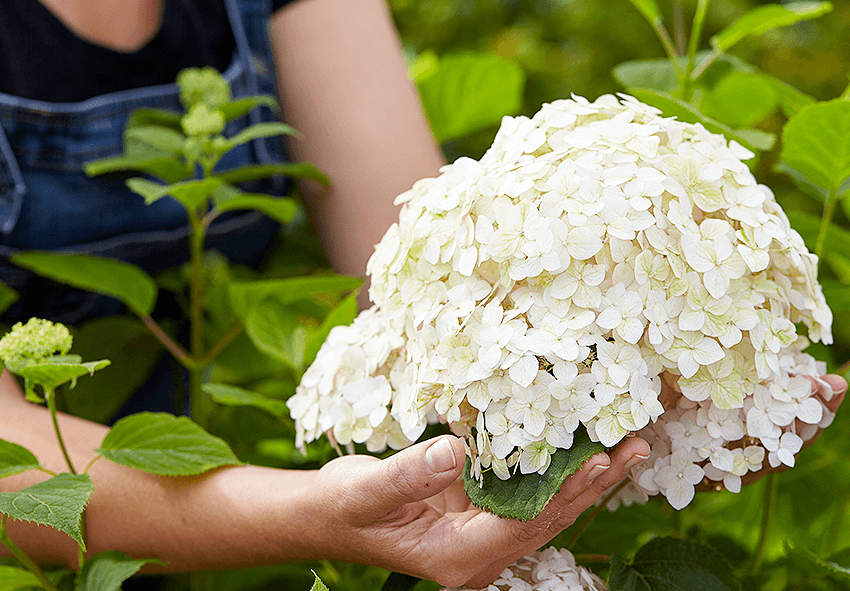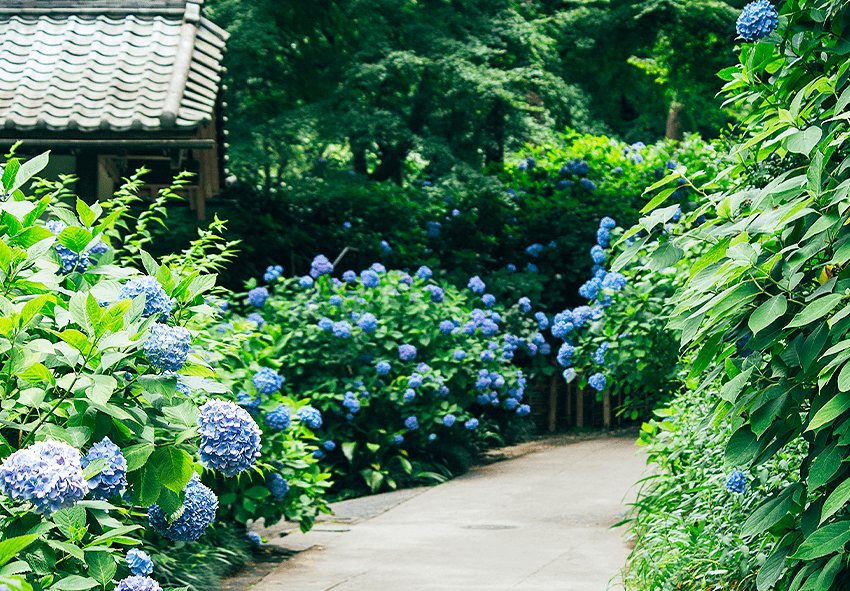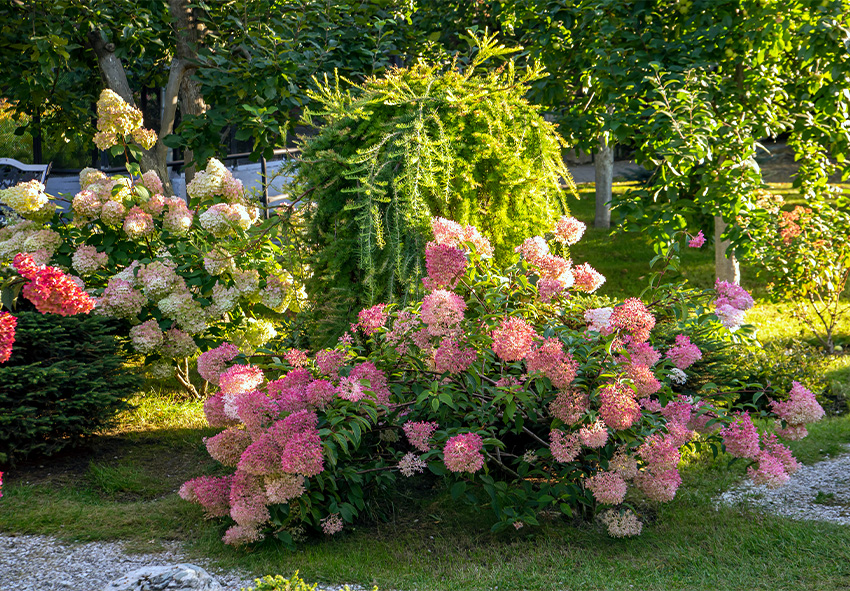Hydrangeas are beloved for their elegant blooms, lush foliage, and versatility in garden settings. These flowering shrubs come in a wide range of colors and sizes, making them a perfect fit for nearly any landscaping style — from classic cottage gardens to modern minimalist designs. In this guide, you’ll discover everything you need to know about hydrangea garden design, including choosing the right varieties, creative layout ideas, ideal companion plants, and seasonal care tips to keep your garden vibrant year-round. Our gardening blog is a perfect place to find all the information you need!
Choosing the Right Hydrangea Varieties for Your Garden

Choosing the appropriate hydrangea variety is the first step toward creating a visually stunning and well-balanced garden. Each type offers unique colors, shapes, and growth patterns that suit different garden designs and climates. Understanding the differences will help you select the best hydrangea for your space and aesthetic goals.
Popular Hydrangea Types
Hydrangeas come in several distinct species, each offering unique flowers, growth habits, and landscape benefits. Whether you’re looking for dramatic blooms, climbing coverage, or year-round interest, understanding the main hydrangea types will help you choose the right plant for your garden style and climate conditions. Below are the five most popular hydrangea varieties commonly used in garden design:
- Bigleaf Hydrangea (Hydrangea macrophylla): Known for its large, mophead or lacecap blooms in shades of pink, blue, or purple. These colors change depending on soil pH — acidic soils turn flowers blue, alkaline soils make them pink. Ideal for part-shade gardens and coastal climates, they bloom in summer and add vibrant texture to foundation plantings.
- Panicle Hydrangea (Hydrangea paniculata): Features cone-shaped flower clusters that start white and turn pink as they mature. This is one of the hardiest hydrangea types, thriving in full sun and colder regions. It’s perfect for mass plantings, hedges, or even pruning into small tree forms, blooming from mid-summer into fall.
- Smooth Hydrangea (Hydrangea arborescens): Produces rounded white or greenish-white blooms and is one of the most reliable bloomers. It performs well in partial sun and is ideal for woodland borders or native garden designs. The popular ‘Annabelle’ variety is a standout for its huge, showy flower heads.
- Oakleaf Hydrangea (Hydrangea quercifolia): Distinct for its oak-shaped leaves and cone-shaped flowers that bloom in early summer. Its foliage turns stunning shades of red or purple in fall, offering multi-season interest. Excellent for shady borders, woodland settings, or naturalized landscapes.
- Climbing Hydrangea (Hydrangea anomala subsp. petiolaris): A vigorous, woody vine with white lacecap flowers that bloom in late spring to early summer. It clings easily to walls, fences, and pergolas, thriving in shaded vertical spaces. Though slow to establish, it becomes a spectacular feature once mature.
Hydrangeas and Color Planning
Color plays a huge role in landscape design, and hydrangeas provide a unique opportunity to play with tones. Bigleaf hydrangeas are known for their ability to change color based on soil pH, offering shades from pink to blue. With intentional soil management and thoughtful placement, you can create coordinated color schemes that elevate your garden.
Hydrangea blooms can range from icy blues and soft pinks to creamy whites and deep purples. This color-shifting ability makes them a creative tool in garden color planning. Grouping colors by season or using hydrangeas to echo tones in hardscapes or furniture can create striking visual harmony.
Matching Varieties to Garden Style
Your garden style sets the tone for the types of plants that will look best. Hydrangeas come in compact and expansive forms, making them suitable for both small courtyards and large estates. Matching hydrangea types to the mood and layout of your garden will help everything feel cohesive and intentional.
Cottage gardens benefit from the romantic, full blooms of mophead hydrangeas, while minimalist or modern gardens are elevated by the structured form of panicle types. Oakleaf hydrangeas fit beautifully in woodland settings due to their textured foliage and naturalistic look. Compact hydrangeas like ‘Little Lime’ or ‘Cityline Paris’ are great for small gardens or urban spaces.
Design Ideas and Layouts with Hydrangeas

A thoughtful layout is essential for maximizing the visual impact of hydrangeas in your landscape. Whether used as centerpieces or background fillers, these shrubs add dimension, color, and texture to garden designs. Consider how placement, grouping, and support structures can enhance your hydrangea planting.
Using Hydrangeas as Focal Points
Hydrangeas are excellent focal points thanks to their size, shape, and dramatic flower clusters. Plant them at main entrances, gateposts, or the center of circular beds to draw the eye. They also pair well with structural elements like trellises, stone pillars, or garden arches for added visual interest.
Position your hydrangeas where their shape and color can shine — surrounded by evergreens, low-growing perennials or decorative mulch to enhance contrast and curb appeal. Or you can find more creative uses in our guide for hydrangeas.
Hydrangeas in Borders and Mass Plantings
Borders and mass plantings are a fantastic way to showcase hydrangeas while adding depth and rhythm to your garden. Repeating patterns and thoughtful layering create unity and flow. Hydrangeas bring structure and drama when placed strategically in multi-height arrangements.
Hydrangeas work beautifully in layered borders, especially when combined with other flowering shrubs and perennials. For a bold impact, consider mass planting a single hydrangea variety. Mixing textures — like feathery grasses or glossy foliage — adds complexity to the design.
Container Gardening with Hydrangeas
Container gardening offers a flexible way to enjoy hydrangeas on patios, decks, or balconies. It’s also a great solution for small gardens or renters who want vibrant seasonal color. Selecting the right variety and maintaining proper care are key to success.
Hydrangeas can thrive in containers if given proper care and attention. Choose dwarf or compact varieties and use a high-quality potting mix with good drainage. Place pots where their blooms can be appreciated up close and water regularly.
Companion Planting with Hydrangeas

Pairing hydrangeas with the right companions enhances both the health of your garden and its aesthetic value. Plants with similar moisture and light requirements thrive together and help create a more balanced, low-maintenance landscape. Texture, color, and bloom timing also play important roles in successful combinations.
Ideal Companion Plants
Pairing hydrangeas with the right companion plants not only enhances garden beauty but also supports healthy growth and balance in your landscape. The best companions share similar light, soil, and moisture needs while adding contrast in foliage, height, or bloom time. Below are some of the top companion plants that thrive alongside hydrangeas:
- Hostas – Provide lush, textured foliage that contrasts beautifully with hydrangea blooms; thrive in shade and moist soil.
- Ferns – Add soft, feathery greenery and pair well with hydrangeas in shady, moist environments.
- Astilbes – Bright, fluffy flowers that bloom earlier than hydrangeas and attract pollinators; ideal for part-shade gardens.
- Boxwood – Evergreen shrubs that offer year-round structure and contrast with hydrangeas’ soft blooms.
- Heucheras (Coral Bells) – Colorful foliage adds visual interest and works well as a low-growing companion.
- Japanese Forest Grass (Hakonechloa) – Graceful, golden blades that create movement and blend nicely in shady borders.
Plants to Avoid Near Hydrangeas
Not all plants make good neighbors for hydrangeas. Some species compete for space, water or nutrients, and others may shade or overwhelm your hydrangeas. Choosing compatible companions ensures all plants can thrive without conflict.
Avoid planting aggressive ground covers or tall shrubs too close to your hydrangeas. Invasive plants may steal nutrients or reduce bloom potential. Always provide enough space for airflow and root expansion.
Conclusion
Hydrangeas are one of the most rewarding plants to incorporate into garden design. Their versatility, long-lasting blooms, and compatibility with other garden elements make them an ideal choice for both beginner and experienced gardeners.
Whether you’re designing borders, creating a shaded retreat, or adding seasonal interest to your yard, hydrangeas offer endless creative opportunities. Explore our online plant store to find premium hydrangea varieties and the garden tools you need to get started!
Frequently Asked Questions (FAQs) about Hydrangeas in Garden Design
1. What are the best hydrangea varieties for small gardens?
For small gardens, compact varieties like Bigleaf (Hydrangea macrophylla) and Smooth Hydrangea (Hydrangea arborescens ‘Annabelle’) are ideal. They provide beautiful blooms without overwhelming the space. Panicle hydrangeas also come in smaller cultivars suited for limited areas, offering seasonal interest and easy maintenance.
2. How can I change the flower color of my hydrangeas?
Bigleaf hydrangeas’ flower color depends on soil pH. Acidic soils (pH below 6) produce blue flowers, while alkaline soils (pH above 7) result in pink blooms. To adjust color, amend soil with aluminum sulfate for blue or add lime for pink, but changes take time and consistent soil care.
3. Can hydrangeas grow in full sun?
Some hydrangea types tolerate full sun better than others. Panicle hydrangeas (Hydrangea paniculata) thrive in sunny spots and colder climates. However, Bigleaf and Oakleaf hydrangeas prefer part shade to prevent leaf scorch. Always consider your local climate and hydrangea variety for optimal growth.
4. Can I order hydrangeas and garden supplies online from your online store?
Yes! Our online plant store Dutch-bulbs.com offers a wide selection of hydrangea varieties, garden tools, and accessories. We provide detailed plant descriptions, care tips, and fast shipping to help you create a beautiful garden. Browse our collection and order hydrangeas delivered straight to your doorstep.
5. How do I care for hydrangeas in winter?
Protect hydrangeas from harsh winter conditions by mulching around the base to insulate roots. Some varieties, like Panicle and Smooth hydrangeas, are hardier and require less protection. For tender types, consider covering with burlap or bringing potted plants indoors during freezing temperatures.
Published: 08.07.2025
